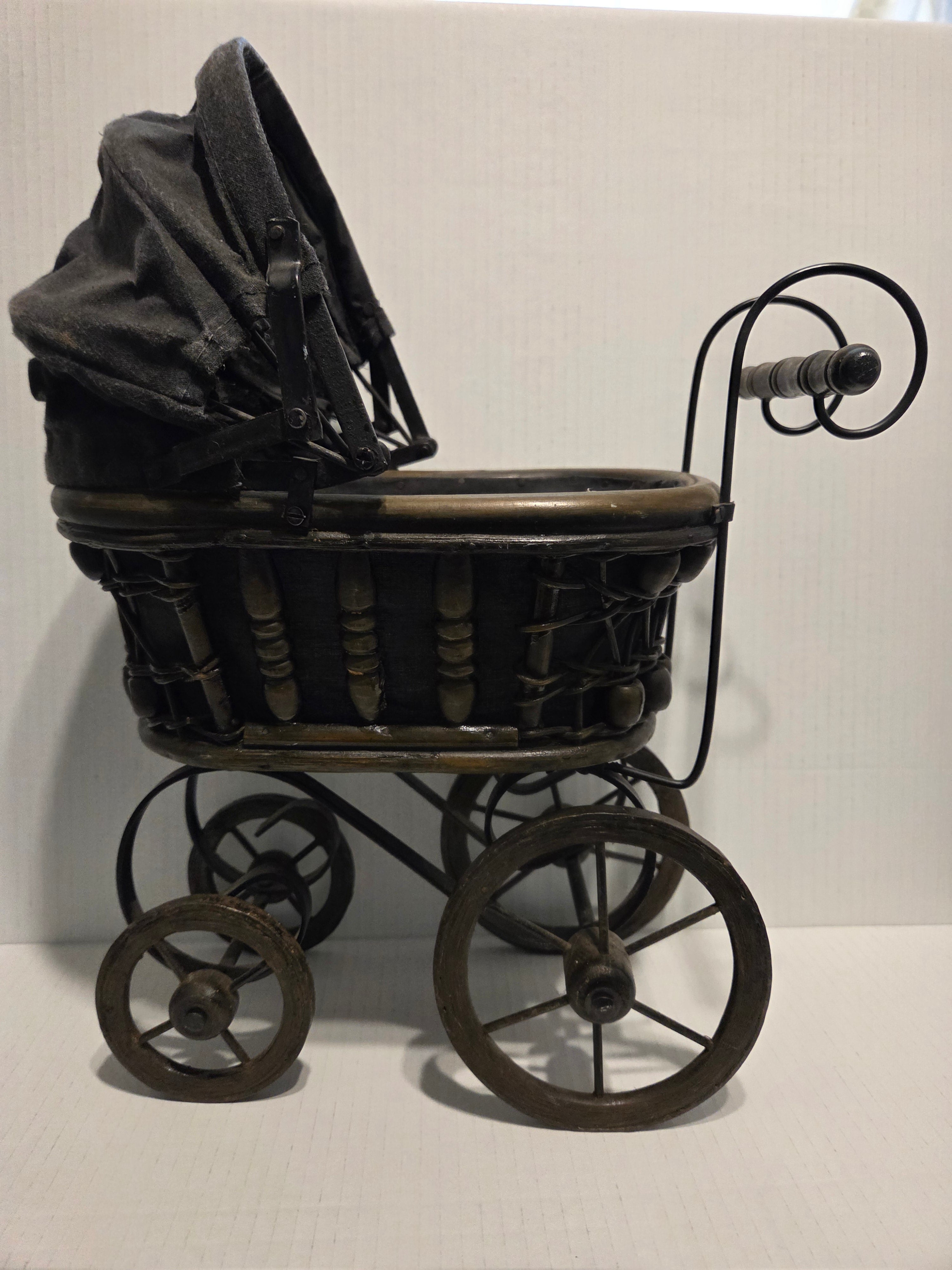
Item: Antique Doll Carriage / Pram
Period: Late Victorian to Edwardian Era (circa 1890s - 1910s)
This style of doll carriage is a detailed miniature of the full-sized baby prams used during that time. Several features confirm its age:
Wicker Body: The use of woven wicker or reed for the body was extremely popular for carriages in this era.
Spindled Design: The wooden spindles incorporated into the wicker body are a classic design element from the late 19th century.
Large Spoked Wheels: The large, thin, spoked wheels are direct imitations of those on real horse-drawn carriages and early prams.
Suspension: The carriage sits on a metal frame with a simple leaf or "C" spring suspension, which provided a gentle bounce and was a key feature before more modern suspension systems were developed.
Description and Purpose
This was not a simple toy but a high-quality, luxury item for a child from a well-to-do family. It was built to last, with a woven wicker body, a steel frame and wheels, and a collapsible fabric hood (pram). The fabric on the hood appears to be original, likely a heavy canvas or oilcloth that has faded and weathered over time, adding to its authentic character.
Estimated Value
The value of antique doll carriages like this one is determined by their age, condition, originality, and decorative appeal.
Based on recent auction results and sales of similar Victorian and Edwardian doll prams, the estimated resale value for this piece in its current "as-found" condition is in the $150 to $300 CAD range.
Here are the factors that contribute to this valuation:
Strengths:
Authenticity: It is clearly a genuine antique, not a reproduction.
Completeness: It appears to be complete with its original body, wheels, handle, and hood.
Decorative Appeal: It has immense decorative value. These are very popular with interior designers and collectors of vintage toys, dolls, or Americana/Canadiana.
Factors to Consider:
Condition: The piece shows significant, authentic wear for its age (110+ years old). The rust on the wheels and the fading and weathering of the fabric hood are part of its history. A piece in pristine, "attic-fresh" condition would command a higher price, but your carriage's visible age is a large part of its charm.
Maker: Most of these were not marked, but if you were to find a small metal tag or stencil from a maker like Gendron, Whitney, or a Canadian manufacturer, the value could increase.
This is a beautiful piece of social history, offering a tangible glimpse into the world of childhood over a century ago. It's a fantastic find.


